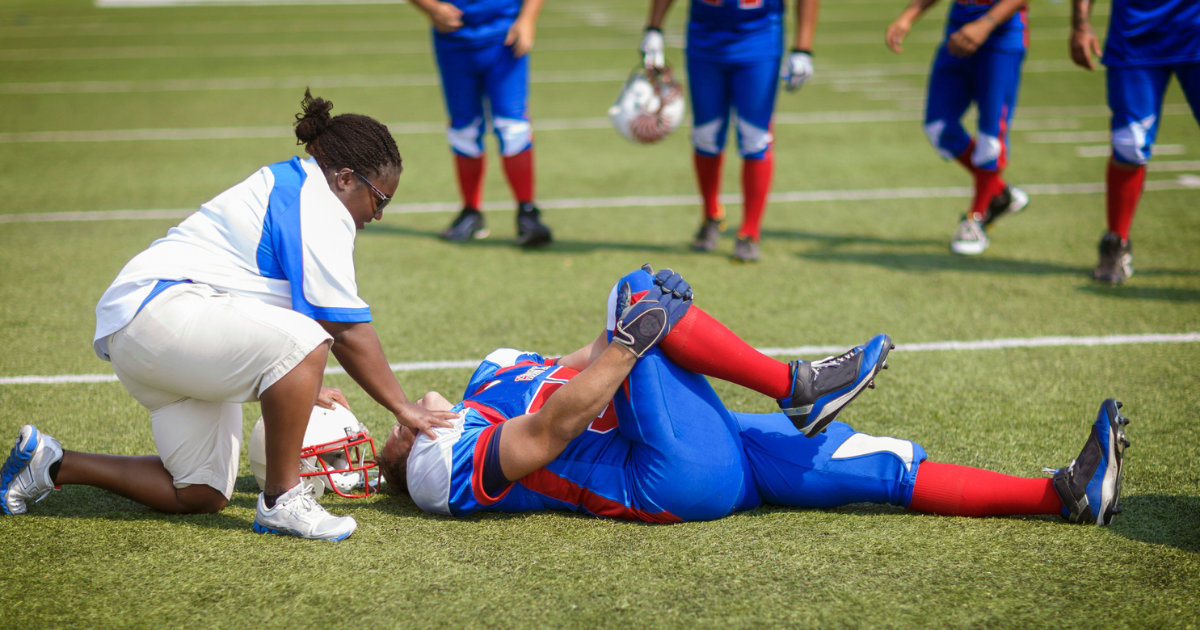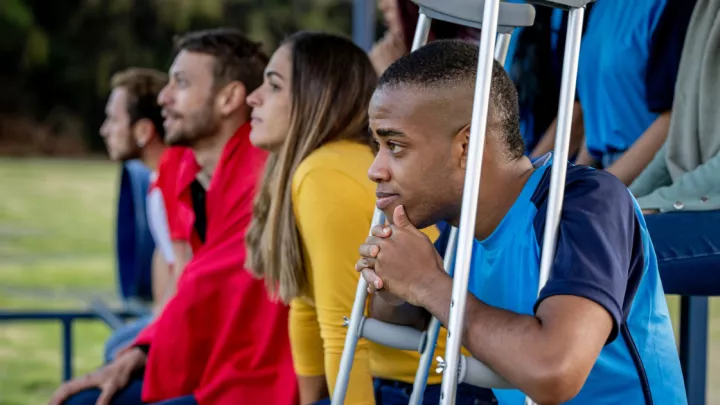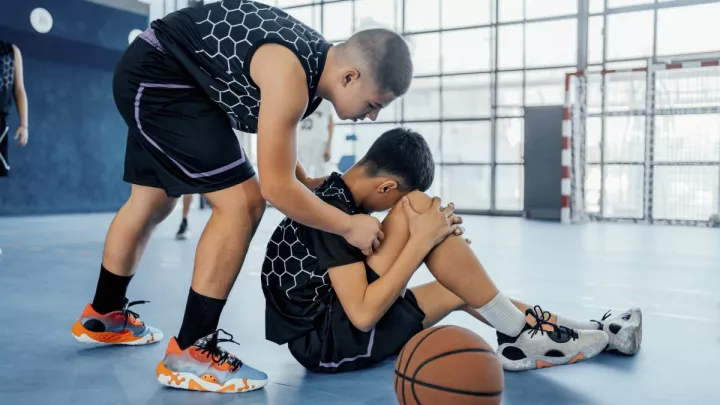3 common football injuries (and how to prevent them)

Every fall, football dominates the weekends in America. From high school Friday night lights to flag and peewee football on Saturday and Sunday, families spend countless autumn afternoons and evenings cheering on their loved ones during a football game. While football remains an exciting spectator sport, the game’s high level of contact means injuries are, unfortunately, quite prevalent.
Most common football injuries
According to Rusty McKune, ATC, Nebraska Medicine sports medicine supervisor, three common football injuries are sprains, strains and concussions. Sprains, which are ligament injuries, frequently occur in the ankle or knee. “Ligaments connect bone to bone. In the ankle, people usually injure these ligaments on the outside of the ankle,” says McKune. “So, when the ankle rolls in, the lateral ligaments are often injured.”
Knee sprains are also frequent football-related injuries. “With knee sprains, we typically see injuries to the MCL (medial collateral ligament) on the inside of the knee, or the one everyone hears about, the ACL (anterior cruciate ligament),” says McKune. Due to football’s level of contact and high-level speed and direction changes, such knee sprain injuries are common despite advances in sports medicine.
Strains, injuries to muscles rather than ligaments, are also commonplace in football. “Typically, in football, common strains are to the quadriceps, hamstrings and groin,” says McKune. “Any muscle in these groups is at risk during a football game.”
When diagnosing strains or sprains, health care providers will generally assign a degree of severity to these injuries. "When we talk about a Grade 1 sprain or strain, it's just a stretching," says McKune. A Grade 1 strain or sprain is mild. Grade 2 strains or sprains indicate a partial tear or a moderate injury. Finally, a Grade 3 injury is a complete tear, which is the most severe. "Each of these grades will vary in the amount of time that it's going to take someone to heal and get back on the field," says McKune.
The third most frequent football injury is a concussion. “Concussions are injuries that have received much attention in the media,” says McKune. “But it’s also one I think we’re making headway on. We still have a long way to go, especially in some youth leagues, but from what I’ve seen, we’ve developed a greater understanding of the injury, especially over the past ten years.”
Despite an increase in comprehension of concussions, they remain a concern for many players and families. Still, having more knowledge of concussions has allowed coaches and health care providers to better help players who experience them. “Our recognition of the injury is greater, as is our understanding of how to manage it,” says McKune.
Part of this greater insight into concussions comes from the Nebraska Medicine Concussion Clinic at the University of Nebraska-Lincoln. This clinic treats concussions of all types but specializes in diagnosing sports-related concussions and managing and treating each injury in an individualized manner.
Preventing football-related injuries
While it’s impossible to eliminate injuries from football, there are specific methods players and coaches can employ to help prevent football-related injuries as best as possible. Five keys to injury prevention are:
- Education/coaching
- Conditioning
- Equipment
- Rest
- Nutrition
“One of the biggest things for injury prevention is proper coaching, especially for younger players,” says McKune. “The coaches are the first line of defense because they teach kids how to play and enjoy the sport within the rules and in a safe manner.”
Proper conditioning is another essential factor in injury prevention. “Make sure you’re strong and flexible. If we’re talking about injuries like strains and trying to prevent them, understanding and ensuring things like dynamic flexibility and proper warm-up are critical,” says McKune.
Ensuring your equipment is new or in proper condition is another key to injury prevention. “You don’t want to use old equipment that’s been on a shelf since the end of the last season without making sure everything is in working order,” says McKune.
Nutrition and rest are also crucial to preventing football-related injuries. "You want to ensure you're properly fueling your body and getting plenty of sleep," says McKune. "The body needs rest and nourishment to recover again, and many things that are key to recovery are happening during sleep.”
Nutrition and rest are also crucial to preventing football-related injuries. "You want to ensure you're properly fueling your body and getting plenty of sleep," says McKune. "The body needs rest and nourishment to recover again, and many things that are key to recovery happen during sleep.”
Treating sports injuries at Nebraska Medicine
Some indications you have an injury and need an examination include:
- A lack of reduction in pain or disability.
- Something that swells or has discoloration.
- Any deformity, like a bone or joint that doesn't look like it should.







